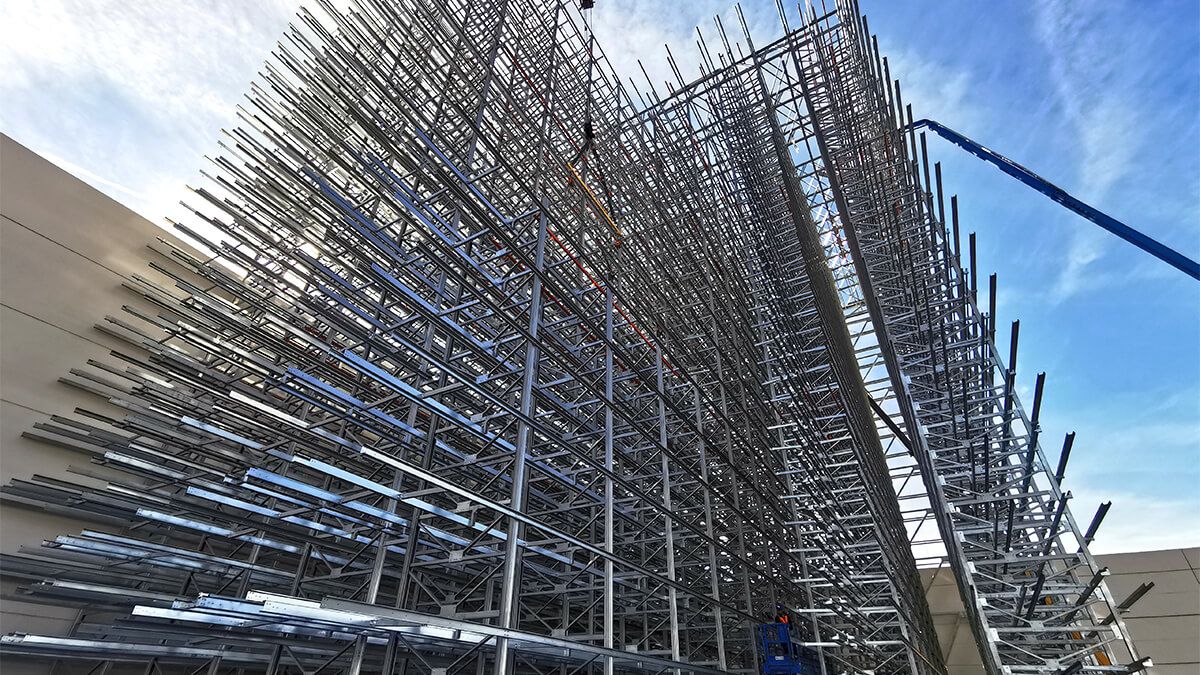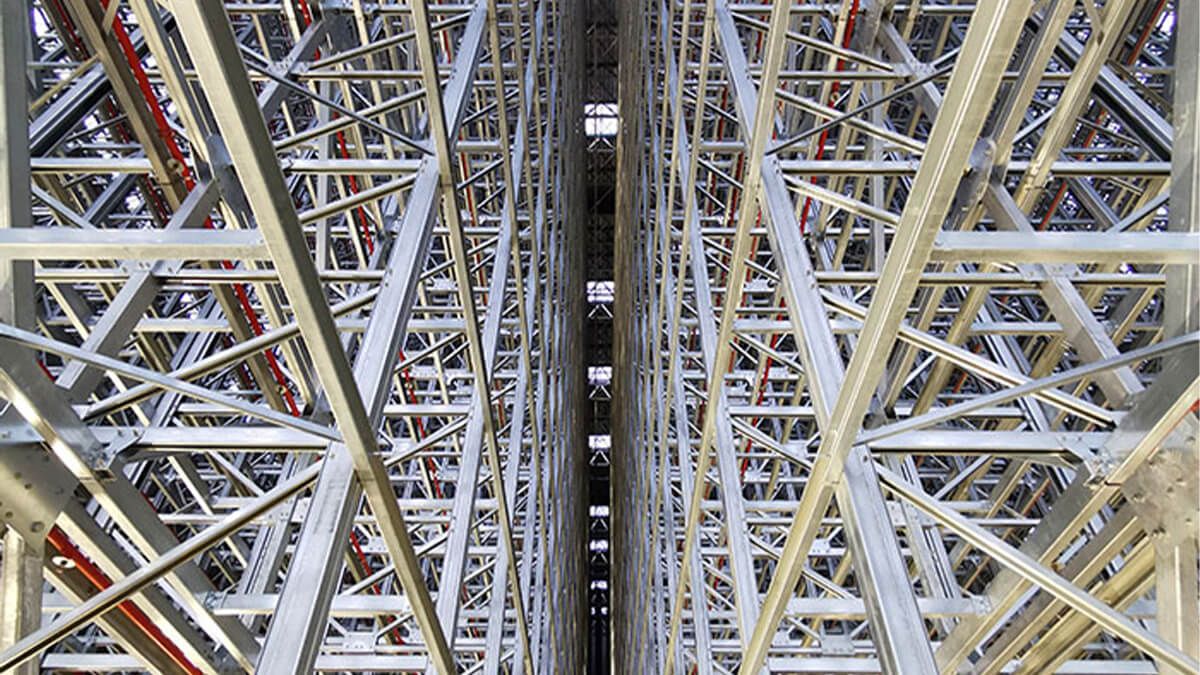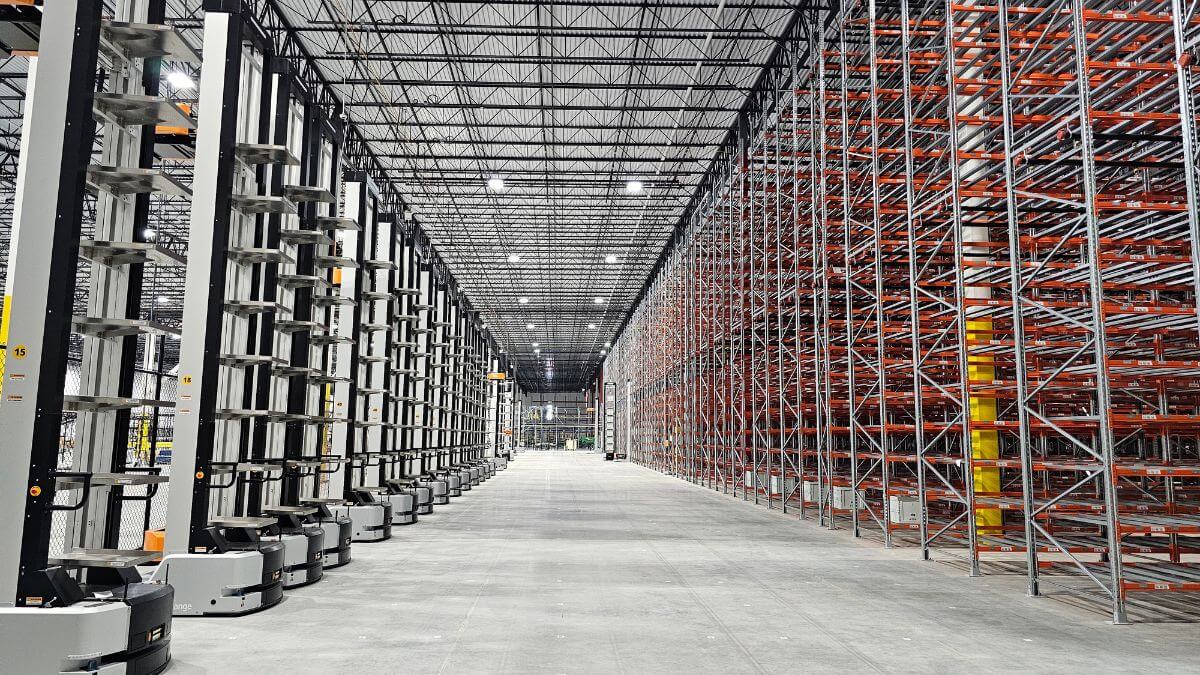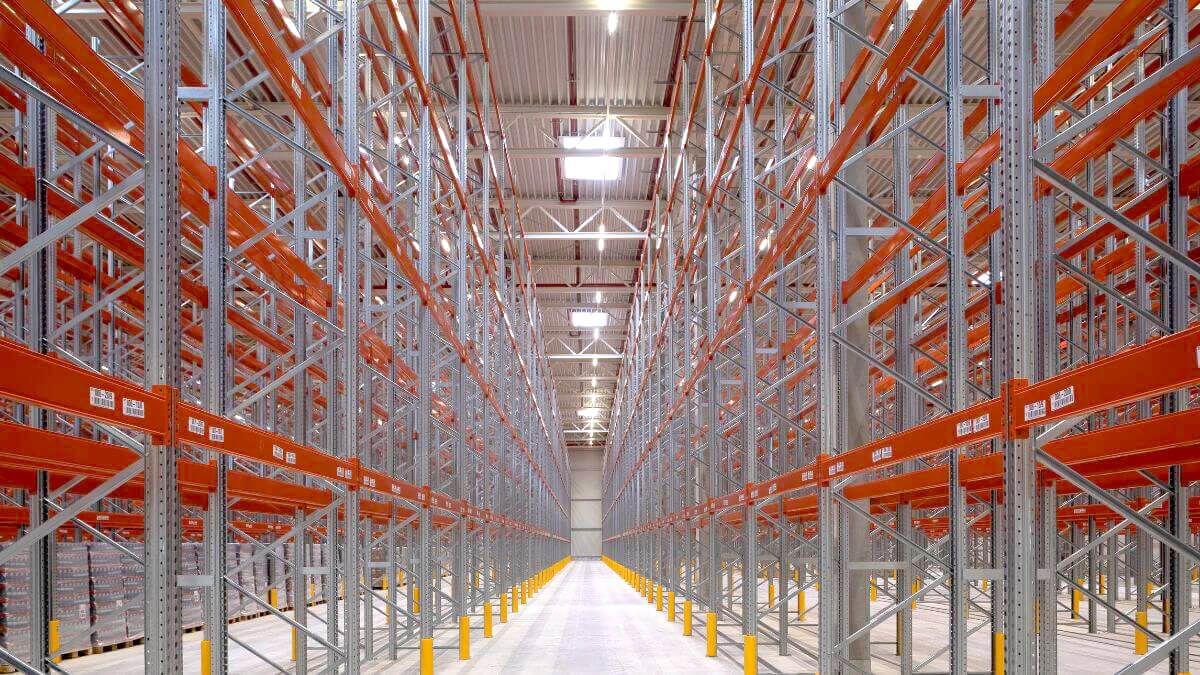When we talk about maximum optimisation of the space of a warehouse or automatic storage at height, the leading storage system in this respect is the clad-rack warehouse.
We outline below the characteristics, advantages and applications of this complex but efficient industrial storage system.
What is a Clad-Rack Warehouse?
A clad-rack warehouse is a high-bay storage system designed not only to store goods but also to support the structure of the building. In other words, in these types of warehouses the racking is part of the structure of the building, as well as where unit loads are stored or stocked.
Generally, they are designed to store pallet loads and normally incorporate automated machinery to ensure the flow of goods.
Characteristics of the clad-rack warehouse
As mentioned, the main characteristic of clad-rack warehouses is the racking that supports the building and the external enclosures. However, there are many factors that make clad-rack warehouses a unique logistics solution:
High bay
These are warehouses up to 40 metres in height, which is not usual in warehouses equipped with adjustable pallet racking systems.
Withstanding of external forces
In addition to forming part of the structure of the building, the racking withstands the actions of external forces such as wind and snow. Sizing is based on seismic standards and atmospheric agents.
Installation without civil engineering work
Clad-rack warehouses do not need civil engineering work. All that is required is the construction of the floor slab and, occasionally, a watertight perimeter wall. The structure allows the integration of fire protection and evaporation systems, and the installation of drainage systems.
All types of industrial racking
Although it is true that most of these warehouses are automatic, these systems can incorporate all types of racking: adjustable, compact, cantilever, live storage, etc.
Building a clad-rack warehouse
Clad-rack warehouses are characterised, among other things, by the need for minimal civil engineering work, but there are certain phases to be completed for their materialisation. Broadly speaking, the steps are:
Suitability of the surface
After a detailed study of the location of the surface and the environmental characteristics where the warehouse will be located, the ground must be prepared through a process that firstly includes the excavation phase and, secondly, the filling and compacting phase. Filling and compacting elevates the undisturbed natural surface of the ground or restores this level.

Slab
It involves the application of a homogeneous surface, mainly concrete, on which the entire warehouse installation will be supported.
Perimeter walls
Not always necessary, they normally reach a height of between 1 and 2 metres and are watertight.
Racking assembly
This refers to the installation phase of the racks where the load will be stored and which will also support the warehouse structure.If the clad-rack warehouse requires stacker cranes or other types of automated machinery, they will be integrated after the installation of the racking.
Roof
The façade and roof form the outer face of each clad-rack warehouse. Both are integrated perfectly with the interior metal structure.

Main advantages of the clad-rack warehouse
Clad-rack warehouses offer many advantages over other types of storage solutions:
Full use of the surface area
Rack supported warehouses embody the concept of utilisation of space, as they make full use of metres available in height, therefore enabling the storage of more unit loads. Vertical utilisation of space not only makes clad-rack warehouses high-density warehouses, but also overcomes the drawbacks of having limited floor space, if say floor space is expensive, there is not more available space or there is any other reason that limits horizontal expansion.
High storage capacity
Racking is a structural element of the warehouse, which does away with the need for beams and columns, maximising therefore the useful area that can be fully dedicated to storage space. In addition, the automation that generally accompanies clad-rack warehouses helps to greatly reduce work aisles in favour of more storage space.
Higher productivity
The integration in the racks of automated machinery such as stacker cranes, shuttles, etc., means that in clad-rack warehouses there is a faster and more efficient flow of goods, thus increasing the performance of the warehouse and the company.
Stock control
The digitisation of most or all the processes carried out in automated clad-rack warehouses enable absolute control of products and the operating flow.
Great adaptability
It is a storage solution that allows any type of racking configuration and a design that adapts perfectly to the type of product to be stored. The level of automation is also variable according to the company’s needs.

Immediate return on investment (ROI)
Clad-rack warehouses require substantial initial investment as often they are installations that occupy a lot of horizontal and vertical space. They also require the coordination of many engineering teams and the integration of automatic components. However, once they begin operation the margin for error is minimal thanks to automation, with absolute control in the processes, very high safety indices and a constant flow of goods. Therefore, performance is almost immediate, providing a short-term return on investment.
Ideal solution for cold storage
Clad-rack warehouses perfectly adapt to warehouses that require cold work or work in freezing chambers thanks to the maximum compaction of space. It is important that the pallet racking systems for cold stores, whether in clad-rack warehouses or in other types of warehouses, adequately cope with these environmental conditions and combat corrosion, as with AR Racking’s galvanised racking.
Factors to consider with clad-rack warehouses
Firstly, compliance with the EN-1090 standard for CE marking is required for manufacturers of metal clad-rack structures that are installed in the European Community, as set out in Regulation No. 305/2011 of the European Parliament, because in this case industrial racking is considered a fundamental part of the building. In order to obtain the certification, the demanding requirements imposed by the standard in terms of materials, welding, cutting, forming and surface treatments must be passed with full compliance.
Secondly, although clad-rack warehouses do not demand all the requirements of a civil engineering work, they do constitute major engineering works and are projects that require detailed analysis, precise design, tight planning and team coordination. For this reason, it is very common for the implementation of this storage solution to be tackled from an integral perspective and to be specified as a turnkey project.
If you are considering the possibility of a clad-rack warehouse to optimise your company's storage, contact our experts to receive personalised advice on your project.
3 examples of clad-rack warehouses
Given the need for a fast inflow and outflow of goods, an increasing number of companies are opting for automated clad-rack warehouses as a storage solution. Rack supported warehouses adapt to all types of companies, sectors and loads. Here are some of the examples of projects carried out by AR Racking:
Sinteplast
Installation of a 38-metre high single deep clad-rack warehouse for the Argentinian paint company Sinteplast. The installation also has a miniload system for boxes. With this installation, a storage capacity for 18,400 pallets was generated and the customer doubled their shipment capacity.
Salto Systems
AR Racking installed a clad-rack warehouse with a single deep forklift for this company dedicated to access control solutions. 26-metre high warehouse to double production.
García Baquero
The renowned dairy products brand commissioned AR Racking to build a clad-rack warehouse for its refrigerated products in Ciudad Real.













